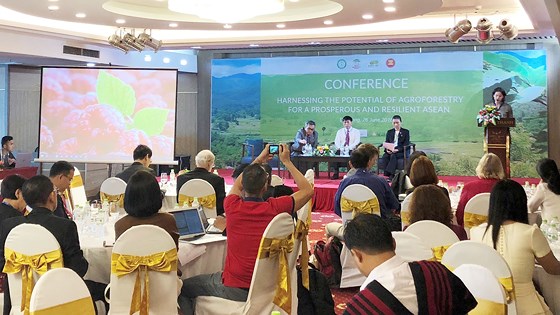Measures discussed to harness potential of agro-forestry for sake of ASEAN
A total of more than 100 delegates from Southeast Asian countries attended a workshop in Da Nang on Tuesday to together discuss effective measures for harnessing the potential of agro-forestry for a prosperous and resilient ASEAN.
 |
| The event in progress |
Organised by the World Agroforestry Centre (ICRAF), the event aimed to promote agroforestry development for food security, climate-change mitigation, and resilience in Southeast Asia.
In detail, specific objectives were to share experience of agroforestry development in different contexts, including landscape restoration, watershed protection, Nationally Determined Contributions to reducing greenhouse-gas emissions (NDCs), and climate resilience; identify priority actions toward implementing the ASEAN Guidelines for Agroforestry Development at national and regional levels; and foster concerted actions among ASEAN Member States (AMS), international organisations, donor agencies and others to promote agroforestry in the region.
There were discussions about the great significance of agroforestry which is a land use management system in which trees or shrubs are grown around, or among crops, or pastureland. This intentional combination of agriculture and forestry has varied benefits, including increased biodiversity, and reduced erosion.
The participants also highlighted a number of issues, including the agri-silviculture in association with restoring and protecting of river basins, and agro-forestry combination in managing disasters and restoring capacity.
Recently, agri-silviculture has proved great benefits in economy, society and environment.
Currently, the application of model with a purpose to ensure food security and climate change adaptation in Southeast Asia has been modest due to a lack of adequate policies for agri-silviculture development.
Therefore, the building of guidelines on developing agri-silviculture in the Southeast Asian region is considered a priority and most practical activity in the current context of climate change, disasters and extreme climate conditions.